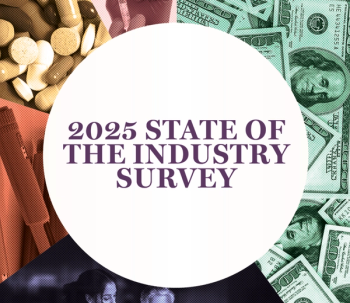
Balancing the Costs of Rare Disease Treatment
The rare disease community struggles to balance care with costs.
A rare disease is defined as a medical condition that affects fewer than 200,000 individuals in the United States. Such diseases tend to be chronic-and often life-threatening. And treatments for these conditions are severely lacking. In fact, according to America’s Biopharmaceutical Companies,
Luckily, over the past few years, the FDA has approved a record-breaking number of rare disease treatments. Yet, the high list prices for these drugs remain
In the recent Managed Healthcare Executive’s Managed Care Pharmacy Survey, consultants, health plans, and pharmacy benefit managers (PBMs), were asked to identify the best long-term approach to managing the high cost of rare diseases, 28% of respondents called for a more integrated approach by benefit managers around total cost of care across the healthcare continuum.
Read more:
That response was followed with 22% of respondents calling for National Institute for Healthcare and Care Excellence (NICE)-like or Institute for Clinical and Economic Review (ICER)-based limitations around access to such therapies based upon some measure of cost-benefit like cost or quality-adjusted life year (QALY) and 19.6% suggesting more aggressive utilization management strategies to routinely assess risk versus benefit of such therapies and promote discontinuation where possible is the way to go.
David Henka, president and CEO of
“The findings suggest that payers are really starting to understand the value of this organization and its tremendous work,” he said. “ICER-like tools are the gold standard and what payers should be looking to in order to identify cost-effective pharmaceutical therapies. The next step is to determine how to best integrate these kinds of tools into a benefits package or a purchasing program for a plan sponsor.”
But Rachel Sher, vice president of regulatory and government affairs at the
"The FDA is approving a record number of orphan therapies and there has been a corresponding increase in record prices set for new orphan products entering the market,” she explains. “Utilization management strategies are an appropriate way to control overall healthcare costs if there are multiple therapies and/or generic or biosimilar alternatives available. But for many rare disease patients, if they are lucky enough to have a therapy on the market, there is often only one option. More aggressive utilization management techniques would not be appropriate in such circumstances."
It is challenging to strike the right balance between costs and care in this scenario-which may be why more than 13% of the survey respondents selected the “other” category for this question in this survey. Healthcare stakeholders also suggested that federal programs to help bolster drug development, drug approval, and licensing, as well as to better control pricing, may be of benefit.
Kayt Sukel is a science and health writer based outside Houston.
Newsletter
Get the latest industry news, event updates, and more from Managed healthcare Executive.






















































